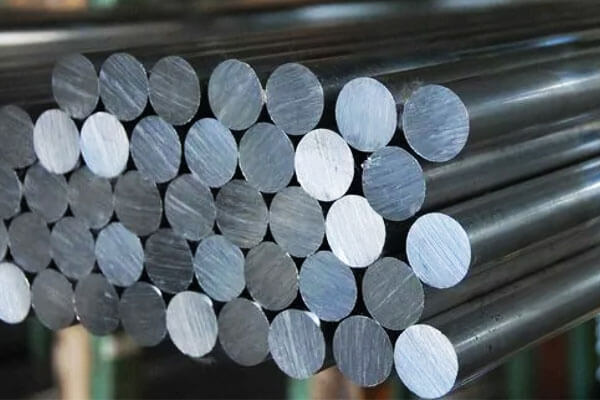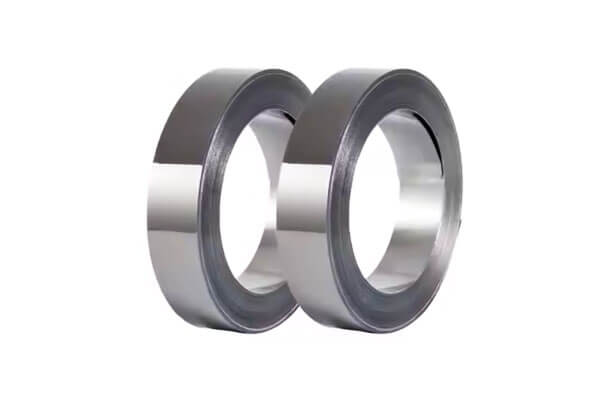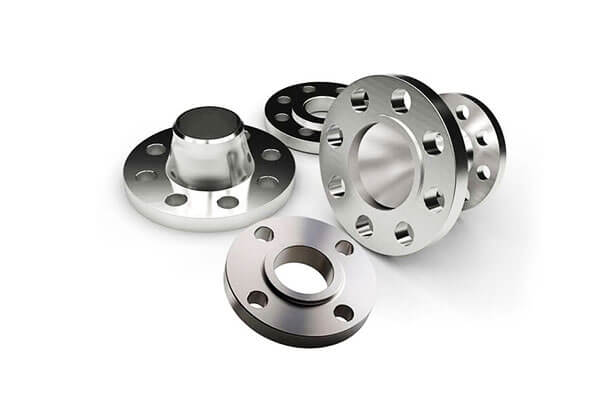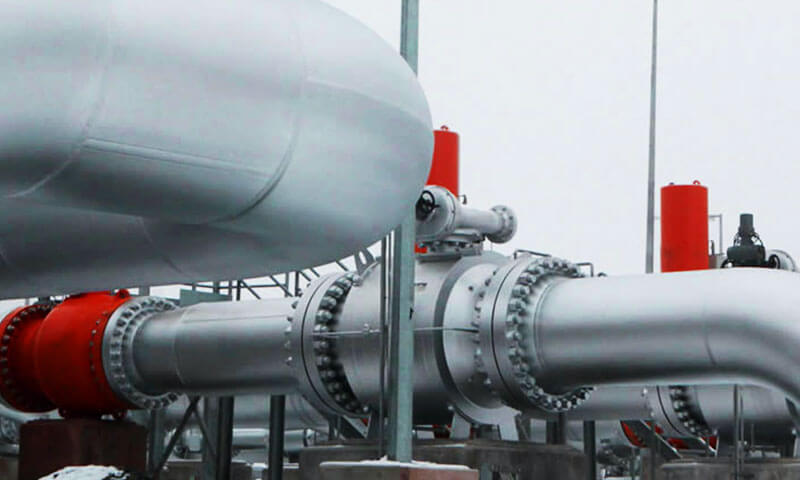1. Ievads
Nickel-based alloys have long been the foundation of high-performance materials used in extreme environments.
Their ability to withstand augsta temperatūra, oksidēšanās, un mehāniskais spriegums makes them indispensable in avi kosmosa, enerģijas ražošana, un rūpnieciskās lietojumprogrammas.
Starp šiem sakausējumiem, Niķeļa sakausējums 75 (2.4951) has earned a reputation for its exceptional thermal stability, šļūdes pretestība, un izturība pret koroziju
Originally developed in the 1940s for the Whittle jet engine turbine blades, this alloy has continued to prove its reliability and versatility vairākās nozarēs.
Its unique combination of mehāniskā izturība, termiskā stabilitāte, un izgatavošanas vieglums makes it an attractive choice for applications requiring long-term durability in high-temperature environments.
Šis raksts nodrošina in-depth technical analysis of Nickel Alloy 75 (2.4951), covering:
- Chemical composition and microstructure, explaining how each element contributes to its superior properties.
- Fizisks, termisks, and mechanical characteristics, detailing its performance under extreme conditions.
- Manufacturing techniques and processing challenges, highlighting the best fabrication methods.
- Industrial applications and economic feasibility, demonstrating its widespread use.
- Future trends and technological advancements, exploring the next phase of alloy development.
By the end of this discussion, readers will have a comprehensive understanding of Alloy 75 and why it remains a preferred material for demanding engineering applications.
2. Ķīmiskā sastāva un mikrostruktūra
Primary Constituents and Their Functions
Niķeļa sakausējums 75 (2.4951) ir a nickel-chromium alloy paredzēts moderate high-temperature applications.

The following table outlines its key alloying elements and their contributions to material performance:
| Elements | Sastāvs (%) | Darbība |
|---|---|---|
| Niķelis (Iekšā) | Līdzsvars (~75.0%) | Provides oxidation and corrosion resistance, ensures thermal stability. |
| Hroms (Krekls) | 18.0–21,0% | Enhances oxidation and scaling resistance, strengthens the alloy. |
| Titāns (No) | 0.2–0.6% | Stabilizes carbides, improves high-temperature strength. |
| Ogleklis (C) | 0.08–0,15% | Forms carbides to enhance hardness and creep resistance. |
| Dzelzs (Fe) | ≤5.0% | Adds mechanical strength without compromising corrosion resistance. |
| Silīcijs (Un), Mangāns (Nojaukšanās), Vara (Cu) | ≤1,0%, ≤1,0%, ≤0.5% | Provide minor processing benefits and oxidation resistance. |
Mikrostruktūras analīze
- Līdz FCC (Uz seju orientēts kubiskais) kristāla struktūra ensures high ductility and fracture toughness, which is essential for thermal cycling applications.
- Titanium and carbon form carbides (Tik, Cr₇C₃), significantly increasing the alloy’s creep strength at elevated temperatures.
- Microscopic examination (KAS, TEM, and XRD analysis) confirms that uniform grain structures contribute to improved fatigue resistance.
3. Physical and Thermal Properties
Basic Physical Properties
- Blīvums: 8.37 G/cm³
- Kušanas diapazons: 1340-1380°C
- Elektriskā pretestība: 1.09 mm²/m (higher than stainless steel, making it ideal for heating elements)
Thermal Characteristics
| Īpašums | Vērtība | Nozīme |
|---|---|---|
| Siltumvadītspēja | 11.7 W/m·°C | Ensures efficient heat dissipation in high-temperature environments. |
| Īpaša siltuma jauda | 461 J/kg·°C | Improves thermal stability. |
| Termiskās izplešanās koeficients (Cte) | 11.0 µm/m·°C (20-100°C) | Maintains structural integrity under thermal cycling. |
Oxidation Resistance and Thermal Stability
- Sustains oxidation resistance up to 1100°C, making it ideal for gas turbines and exhaust systems.
- Maintains mechanical strength under prolonged high-temperature exposure, reducing the risk of deformation.
Magnētiskās īpašības
- Low magnetic permeability (1.014 pie 200 Oersted) ensures suitability for applications requiring minimal electromagnetic interference.
4. Mechanical Properties and High-Temperature Performance of Nickel Alloy 75
This section provides a comprehensive analysis of Nickel Alloy 75 Mehāniskās īpašības, behavior under extreme conditions, and testing methodologies to evaluate its long-term performance.
Stiepes izturība, Peļņas izturība, and Elongation
Tensile properties define the alloy’s ability to withstand static and dynamic loading without experiencing permanent deformation or failure.
Niķeļa sakausējums 75 uzturēt high tensile strength and reasonable ductility across a wide temperature range.

Key Tensile Properties
| Temperatūra (° C) | Stiepes izturība (MPA) | Peļņas izturība (MPA) | Pagarināšana (%) |
|---|---|---|---|
| Room Temp (25° C) | ~ 600 | ~275 | ~40 |
| 760° C | ~380 | ~190 | ~25 |
| 980° C | ~120 | ~60 | ~10 |
Novērojumi:
- High strength at room temperature ensures excellent load-bearing capacity.
- Gradual reduction in tensile strength with increasing temperature is expected due to softening effects.
- Ductility remains sufficient at elevated temperatures, allowing for stress redistribution without brittle failure.
These properties make Niķeļa sakausējums 75 suitable for components exposed to high temperatures and mechanical stress, piemēram, turbīnu lāpstiņas, exhaust ducts, and heat exchanger parts.
Creep Resistance and Long-Term Load Stability
Creep is a critical factor for materials used in Nepārtrauktas augstas temperatūras lietojumprogrammas. It refers to the slow, time-dependent deformation under constant stress.
The ability to resist creep determines the longevity and reliability no sakausējuma 75 in extreme environments.
Creep Performance Data
| Temperatūra (° C) | Stress (MPA) | Time to 1% Creep Strain (hrs) |
|---|---|---|
| 650° C | 250 | ~10,000 |
| 760° C | 150 | ~8,000 |
| 870° C | 75 | ~5,000 |
Galvenās atziņas:
- Strong creep resistance at moderate temperatures (650–760°C) extends component lifespan in jet engines and power plant turbines.
- At 870°C, creep rate increases significantly, requiring careful design considerations for prolonged exposure.
- Sakausējums 75 outperforms conventional stainless steels, making it a more reliable choice for high-temperature engineering applications.
To further enhance creep resistance, manufacturers often optimize grain size and perform controlled heat treatments, nodrošinot microstructural stability during prolonged use.
Fatigue Strength and Fracture Toughness
Fatigue Resistance Under Cyclic Loading
It is a major concern in components subjected to repeated thermal cycling and mechanical stress, such as those in aerospace propulsion systems and gas turbines.
Sakausējums 75 eksponāti strong fatigue resistance, preventing premature failure due to cyclic loading.
| Temperatūra (° C) | Stress Amplitude (MPA) | Cycles to Failure (x10⁶) |
|---|---|---|
| Room Temp (25° C) | 350 | ~10 |
| 650° C | 250 | ~6 |
| 760° C | 180 | ~4 |
Fracture Mechanics and Crack Propagation
Nickel Alloy 75’s fracture toughness is relatively high, novēršana katastrofāla neveiksme due to crack initiation and propagation.
Lai arī, microstructural defects, karbīda nokrišņi, and prolonged thermal exposure can influence crack growth rates.
- Intergranular and transgranular fracture modes have been observed in fatigue testing, atkarībā no temperature and stress levels.
- Optimized grain boundary strengthening techniques (via controlled cooling rates and minor alloying additions) uzlabot pretestība krekam.
Thermal Stability and Oxidation Resistance
Niķeļa sakausējums 75 ir paredzēts oxidation resistance up to 1100°C, making it suitable for components in combustion environments and high-temperature reactors.
Key Thermal Properties
| Īpašums | Vērtība | Nozīme |
|---|---|---|
| Siltumvadītspēja | 11.7 W/m·°C | Allows heat dissipation in high-temperature applications. |
| Īpaša siltuma jauda | 461 J/kg·°C | Ensures thermal stability. |
| Oxidation Limit | 1100° C | Provides excellent surface protection. |
| Termiskās izplešanās koeficients (20-100°C) | 11.0 µm/m·°C | Reduces thermal stress during heating and cooling cycles. |
Oxidation and Surface Stability
- Hroms (18–21%) forms a stable oxide layer, protecting the alloy from high-temperature degradation.
- Low sulfur and phosphorus content minimizes embrittlement in thermal cycling applications.
- Compatible with thermal barrier coatings (TBC) and aluminized coatings to further enhance oxidation resistance.
5. Manufacturing and Processing Technologies of Nickel Alloy 75
Nickel Alloys – Alloy 75 is widely used in high-temperature applications,
necessitating precise manufacturing and processing techniques to maintain its mechanical integrity, termiskā stabilitāte, and oxidation resistance.
This section explores the primary fabrication methods, heat treatment procedures, metināšanas izaicinājumi,
and surface finishing technologies that enhance the alloy’s performance in demanding environments.
Primary Fabrication Techniques
Manufacturing Nickel Alloy 75 components involves liešana, kalšana, ritošs, un mehāniskā apstrāde, each with specific benefits depending on the application.
Liešana
- Investīciju liešana is commonly used to produce complex aerospace components, turbīnu asmeņi, and exhaust parts.
- Sand casting and centrifugal casting are preferred for large-scale industrial furnace and heat exchanger components.
- Izaicinājumi: High-temperature solidification can lead to saraušanās porainība, pieprasot precision control of cooling rates.
Kalšana un velmēšana
- Hot forging enhances grain structure and mechanical properties, padarot to ideāli piemērotu load-bearing components.
- Cold rolling is used to manufacture thin sheets and strips, nodrošinot uniform thickness and surface finish.
- Pabalsti:
-
- Precizējiet graudu struktūru → Improves mechanical strength.
- Reduces internal defects → Enhances fatigue resistance.
- Enhances workability → Prepares alloy for subsequent machining.
Machining Characteristics
Niķeļa sakausējums 75 presents mērens apstrāde difficulty tās dēļ high work hardening rate and toughness.
| Machining Property | Effect on Processing |
|---|---|
| Darba sacietēšana | Cutting speeds must be optimized to minimize tool wear. |
| Siltumvadītspēja (Zems) | Generates excessive heat during machining. |
| Chip Formation | Requires sharp cutting tools with high thermal resistance. |
Best Machining Practices:
- Izmantot karbīda vai keramikas griezējinstrumenti to handle the alloy’s toughness.
- Employ high-pressure coolant systems to manage heat buildup.
- Optimizēt griešanas ātrumi (30-50 m/I) and feed rates to prevent work hardening.

Heat Treatment and Thermal Processing
Heat treatment significantly influences the Mehāniskās īpašības, stress resistance, and microstructural stability of Nickel Alloy 75.
Key Heat Treatment Processes
| Apstrādāt | Temperatūra (° C) | Mērķis |
|---|---|---|
| Rūdīšana | 980–1065°C | Mīkstina materiālu, mazina stresu, and improves workability. |
| Šķīduma ārstēšana | 980–1080°C | Dissolves carbide precipitates, homogenizes the microstructure. |
| Novecošanās | 650–760°C | Enhances creep resistance and high-temperature strength. |
Heat Treatment Advantages:
- Improves grain refinement, enhancing fatigue strength.
- Reduces internal residual stresses, minimizing distortion in components.
- Uzlabo šļūdes pretestību, ensuring longevity in high-temperature applications.
Welding and Joining Procedures
Niķeļa sakausējums 75 var metināt, izmantojot dažādas metodes, bet controlling heat input and preventing carbide precipitation is crucial for maintaining mechanical integrity.
Metināšanas izaicinājumi:
- Cracking Risk: High thermal expansion increases residual stress and hot cracking susceptibility.
- Oxidation Sensitivity: Prasīt inert gas shielding (Argons, Helium) to prevent surface contamination.
- Karbīda nokrišņi: Excessive heat input can lead to carbide formation, reducing ductility and toughness.
Ieteicamās metināšanas metodes:
| Metināšanas process | Priekšrocības | Izaicinājumi |
|---|---|---|
| TIG metināšana (GTAW) | Precīza kontrole, minimal heat input | Slower than MIG, requires skilled operation. |
| Es metināšanu (GMAW) | Ātrāka nogulsnēšanās, good for thick sections | Higher heat input may lead to carbide precipitation. |
| Elektronu staru metināšana (EMS) | Dziļa iespiešanās, minimāli termiski kropļojumi | High equipment cost. |
✔ Labākā prakse: Pēc termiņa (Phwht) pie 650–760°C līdz relieve residual stress and prevent cracking.
Virsmas apstrāde un pārklājumi
Virsmas procedūras uzlabot izturība pret oksidāciju, izturība pret koroziju, and mechanical wear resistance, especially for components in ekstrēma vide.
Oxidation-Resistant Coatings
- Aluminizing: Forms a protective Al₂O₃ layer, uzlabošanu oxidation resistance up to 1100°C.
- Thermal Barrier Coatings (TBC): Yttria-stabilized zirconia (YSZ) coatings provide siltuma izolācija in jet engines.
Korozijas aizsardzība
- Elektropolēšana: Enhances surface smoothness, reducing stress concentrators.
- Niķeļa pārklāšana: Improves corrosion resistance in marine and chemical processing applications.
Wear-Resistant Coatings
- Plasma Spray Coatings: Pievieno a ceramic or carbide layer, reducing surface degradation in augstas berzes vidēs.
- Jonu nitrēšana: Hardens the surface for better wear and fatigue resistance.
✔ Labākā prakse: Selecting coatings based on operating environment (temperatūra, mehāniskais spriegums, un ķīmiskā iedarbība) ensures maximum durability.
Quality Control and Testing Methods
To maintain high performance and reliability, Niķeļa sakausējums 75 components undergo strict quality control procedures.
Nesagraujoša pārbaude (Ndt)
- X-ray Inspection: Detects internal porosity and voids in cast or welded components.
- Ultraskaņas pārbaude (Ut): Evaluates subsurface defects without damaging the material.
- Krāsvielu caurlaidības pārbaude (DPI): Identifies surface cracks in turbine blades and aerospace parts.
Mikrostruktūras analīze
- Scanning Electron Microscopy (KAS): Examines grain boundaries and carbide distribution.
- X-ray Diffraction (XRD): Determines phase composition and crystallographic changes pēc termiskās apstrādes.
Mehāniskā pārbaude
- Stiepes pārbaude (ASTM E8): Measures yield strength, galīgā stiepes izturība, un pagarinājums.
- Cietības pārbaude (Rokvels, Vikers): Evaluates surface hardness after heat treatment.
- Creep and Fatigue Testing (ASTM E139, E466): Ensures long-term durability under cyclic and static loads.
✔ Labākā prakse: Implementing a Six Sigma-based quality control system enhances consistency and minimizes defects in high-performance components.
6. Standarti, Specifikācijas
Maintaining quality and consistency remains paramount for Alloy 75. Manufacturers adhere to stringent international standards and implement rigorous quality control measures.
Sakausējums 75 meets multiple international standards, ieskaitot:
Mūs: N06075
British Standards (BS): HR5, HR203, HR403, HR504
DIN Standards: 17742, 17750–17752
ISO standarti: 6207, 6208, 9723–9725
AECMA Pr EN Standards
7. Frontier Research and Technological Challenges of Nickel Alloy 75 (2.4951)
Innovations in Alloy Design
Computational Material Science
Recent advancements in mašīnmācība (ML) and density functional theory (DFT) rada revolūciju alloy optimization.
Šīs computational models reduce the need for traditional trial-and-error methods and accelerate the development of improved materials.
🔹 A 2023 study by MIT’s Materials Research Laboratory used ML algorithms to refine Alloy 75’s titanium-to-carbon ratio, kā rezultātā a 15% improvement in creep resistance at 900°C.
🔹 DFT simulations predict phase stability under extreme conditions, nodrošinot better oxidation and fatigue resistance in next-generation applications.
Nano-Engineered Precipitates
Scientists are exploring nano-structuring techniques to enhance the Mehāniskās īpašības of Nickel Alloy 75.
🔹 German Aerospace Center (DLR) has successfully integrated 5–20 nm γ’ (Ni₃Ti) precipitates into the alloy through karstā izostatiskā presēšana (Gurns).
🔹 This nano-precipitate formation improves fatigue resistance by 18%, allowing components to endure 100,000+ thermal cycles in jet engines.
Hybrid Alloy Development
Combining Niķeļa sakausējums 75 with ceramic composites is emerging as a next-generation material strategy.
🔹 The European Union’s Horizon 2020 program is funding research on silīcija karbīds (SiC) fiber-reinforced versions of Alloy 75, leading to prototypes with 30% higher specific strength at 1,100°C.
🔹 This innovation paves the way for hypersonic aircraft, ultra-efficient turbines, and next-gen propulsion systems.
Piedevu ražošana (Esmu) Breakthroughs
Laser Powder Bed Fusion (LPBF) Advancements
3D printing technologies have transformed Niķeļa sakausējums 75 component manufacturing, significantly reducing material waste and lead times.

🔹 GE Additive has successfully 3D-printed turbine blades ar 99.7% blīvums using LPBF.
🔹 Optimized laser parameters (300 W power, 1.2 m/s scan speed) have led to 40% reductions in post-processing costs, while still maintaining ASTM tensile strength standards.
Challenges in Additive Manufacturing
Despite these breakthroughs, residual stress and anisotropic mechanical properties remain major obstacles.
🔹 A 2024 study by the Fraunhofer Institute found 12% variability in yield strength across different build orientations, underscoring the need for post-print heat treatment to homogenize the microstructure.
🔹 Current efforts focus on in-situ process monitoring, ensuring defect-free structures through real-time laser parameter adjustments.
Smart Components and Sensor Integration
Reāllaika stāvokļa uzraudzība
Integrācija fiber-optic sensors into Alloy 75 sastāvdaļas is unlocking a new era of predictive maintenance and performance tracking.
🔹 Siemens Energy has embedded fiber-optic sensors in Niķeļa sakausējums 75 turbīnu asmeņi, nodrošinot live data on strain, temperatūra, and oxidation rates.
🔹 This IoT-driven approach has reduced unplanned downtime by 25%, improving efficiency in power generation and aviation sectors.
8. Secinājums
Noslēgums, Nickel Alloy Alloy 75 (2.4951) represents a harmonious blend of chemical precision, physical robustness, un mehāniskā uzticamība.
Its evolution from early aerospace turbine blades to indispensable industrial components underscores its enduring value.
As manufacturing techniques advance and research continues to push the boundaries, Sakausējums 75 remains a strategic choice for high-temperature and high-stress applications.
If you’re looking for high-quality Nickel Alloy 75 produkti, izvēloties Šis ir ideāls lēmums jūsu ražošanas vajadzībām.



